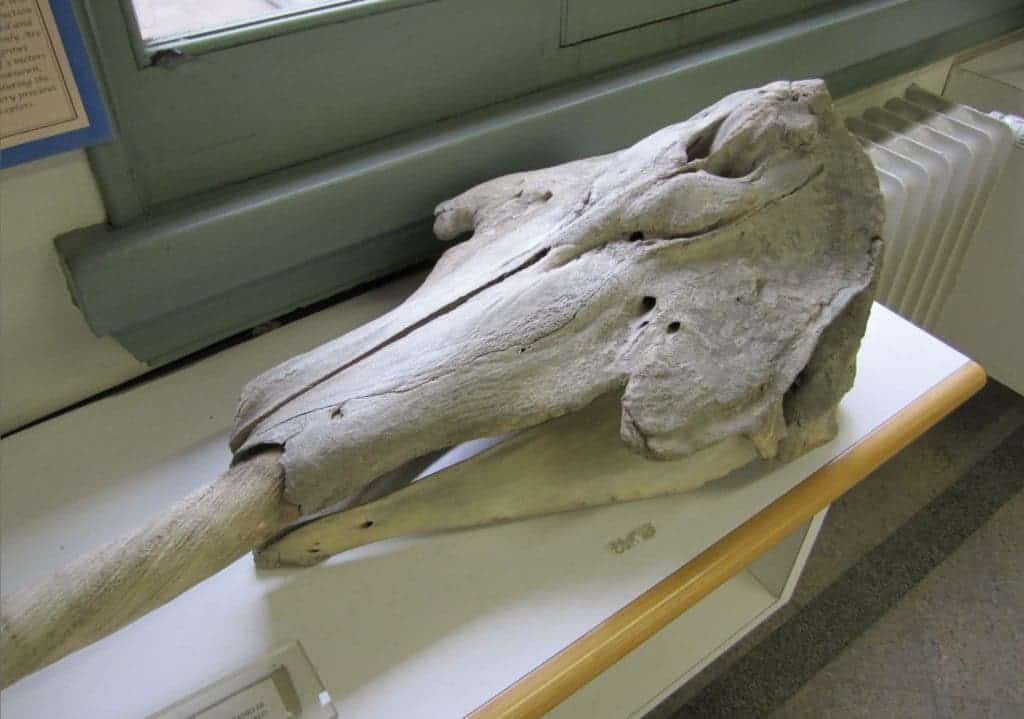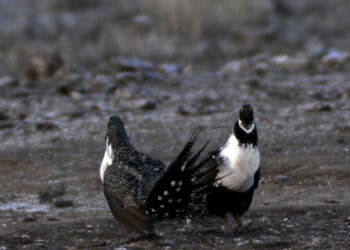
Reproduction is essential to the continuation of any species and organisms have developed all sorts of strategies — some more bizarre than others — under the pressure of sexual selection.
Peacocks are usually the most common example, with their extravagant plumage meant to attract females, at the expense of being a clear target for predators. Other animals attract mates by growing disproportionately large body parts that signal power. Elks have antlers, crayfish use claws, and the narwhal woos ladies with their powerful tusks.
“Broadly, I’m interested in sexual selection, which is responsible for creating some of the craziest traits in biology. As an evolutionary biologist, I try to understand why some animals have these bizarre traits, and why some don’t,” said Zackary Graham, a doctoral student at Arizona State University’s School of Life Sciences.
“One way we try to understand these traits is by looking at the morphology, or the size and shape of them. I immediately became obsessed with trying to think of some interesting animals to study. I was Googling everything; maybe I can find a dinosaur in a museum. Eventually, I found the narwhal tusk.”

Narwhals have tusks protruding out of their foreheads that can grow more than 8-feet-long (2.5 meters) in some of the most gifted individuals. These aren’t horns but rather modified teeth, similarly to those sported by walruses and elephants. Their spiral pattern also gives them an almost mythical appearance, due to which they are sometimes referred to as the “unicorns of the sea”.
Big tusks: an honest signal to potential mates
Narwhals are rather elusive creatures since they spend most of their lives under the thick Arctic ice. This has led to many speculations as to their main purpose. The tusks might be used for fighting, hunting, or — as this latest study suggests — attracting mates.
Graham has a lot of experience studying sexual selection in a variety of species. His Ph.D. thesis, for instance, was focused on the crayfish whose massive claws, known as chelae, often make up 35–50% of their total dry weight. Males with large chelae were more likely to survive predation, occupy positions of dominance, and copulate with females than males with small chelae.
The researchers looked at the relationship between tusk size and narwhal body size in 245 adults that were documented by previous studies over the course of 35 years.
Sexually selected traits — by which I mean those favored for their reproductive value — are often characterized by disproportional growth. Very large individuals will most often have larger than expected sexually selected traits (a large elk has even larger antlers compared to smaller individuals).

Graham and colleagues studied narwhal males of the same age, focusing on the growth (or scaling) of the tusk in relationship with body size. The tusk scaling was then compared to the scaling relationship between body size and a trait that is unlikely to have any sexual function, such as their tail (called a fluke).
“We also predicted that if the narwhal tusk is sexually selected, we expect greater variation in tusk length compared to the variation in fluke width,” said Graham.
Some male tusks were found to have as much as a 4-fold variation in length, despite having the same body size. In contrast, the fluke hardly varied at all, ranging in size from 1.5-feet to 3-feet long (2-fold variation) within individuals of the same body size. There was also evidence of disproportional growth in the tusk compared to the fluke.
This is the best evidence to date that narwhal tusks are sexually selected.
“By combining our results on tusk scaling with known material properties of the tusk, we suggest that the narwhal tusk is a sexually selected signal that is used during the male-male tusking contests,” said Graham. “The information that the tusk communicates is simple: “I am bigger than you.”“
Many sexually selected traits, such as the narwhal’s tusk, require extra resources to foster their development — things like nutrients and body conditions. As such, the biggest, strongest, and most dominant individuals usually afford the resources and energy needed to produce extremely large sexually selected traits. So, a larger tusk compared to other individuals sends an honest signal of sexual quality to both females and other males (their competition).
This isn’t the last word on the matter. Graham hopes that in the future he will be able to use drones and submersible robots in order to record the behavior of elusive narwhals in their natural habitat, deep below the Arctic sea.
“Overall, our evidence supports the hypothesis that the tusk functions both as a sexually selected weapon and sexually selected signal during male-male contests,” said Graham. “However, further evaluations of the narwhal’s ecology are warranted.”
The findings were reported in the journal Biology Letters. Colleagues from the LUTA do Departamento de Ecologia e Biologia Evolutiva, UNIFESP, Brazil and the Greenland Institute of Natural Resources contributed to the narwhal dataset.






